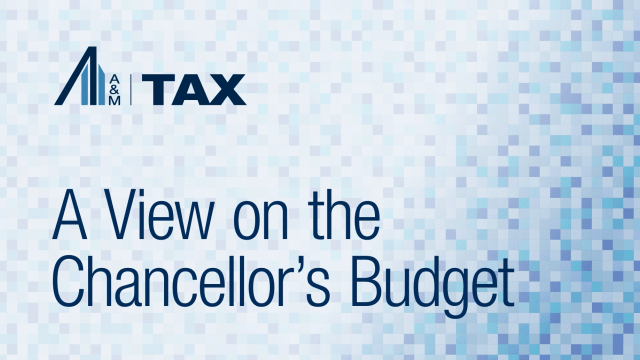The SECURE Act Becomes Law
On December 20, 2019, President Trump signed a year-end spending package that included the long-awaited Setting Every Community Up for Retirement Enhancement Act (the “SECURE Act”), ushering in the most sweeping reform to retirement saving in the U.S. since the Pension Protection Act of 2006.
Many provisions of the SECURE Act, which was drafted to “encourage retirement savings,” are effective for plan years beginning after December 31, 2019; therefore, plan sponsors should familiarize themselves with the changes as soon as possible.
SECURE Act Summary
Small Employer Credits to Expand
Under the previous law, employers with 100 or fewer employees were entitled to an annual tax credit of up to $500 per year for the first three years following the adoption of a qualified retirement plan. The SECURE Act increases the $500 cap to $5,000 and makes an additional $500 credit available to small employers who establish an automatic enrollment feature in a new or already existing plan.
Defined Benefit Plan Non-Discrimination Testing
The SECURE Act provides non-discrimination testing relief, including expanded availability of cross-testing, to certain defined benefit plans that are closed to new hires. This change is expected to prevent the unnecessary freezing of closed plans that have more mature, highly compensated participants still accruing benefits. This is a welcome change for plan sponsors with closed defined benefit plans that have been failing non-discrimination testing in previous years due to unfavorable plan demographics.
Birth/Adoption Distributions
The SECURE Act allows participants to take penalty-free in-service distributions from their retirement accounts of up to $5,000 to help with the birth or adoption of a child. In order to qualify, the distributions must be within one year after a birth or adoption.
Non-Elective Contribution Safe Harbor 401(k) Plans
The SECURE Act makes the following changes to safe harbor 401(k) plans that provide qualified non-elective contributions of at least 3% to their employees: 1) the safe harbor notice requirement is eliminated; 2) a plan is permitted to be amended to become a non-elective safe harbor plan on any date before the 30th day before the close of the plan year; and 3) a plan is permitted to be amended to become a non-elective safe harbor plan on or after the 30th day before the end of the plan year, if the amendment is made before the end of the next plan year and the non-elective contribution is at least 4%.
Increased Availability of Multiple Employer Plans
Prior to the SECURE Act, employers were not permitted to pool their resources to form Multiple Employer Plans unless the employers satisfied a series of restrictive requirements, including some commonality of interests. The SECURE Act greatly expands the availability of Multiple Employer Plans by creating a new type of plan, called a Pooled Employer Plan (“PEP”), which is open to unrelated employers that would not satisfy the commonality of interest requirement, making it easier and less expensive for certain smaller employers to offer retirement plans. Additionally, by pooling resources with other employers in a PEP, smaller employers may be able to access plan features and lower-cost funds that have typically only been available to large plans.
Automatic Escalation Limits for Certain Plans
Under the previous law, default automatic contribution rates applicable to auto-enroll and auto-escalation in 401(k) plans with a Qualified Automatic Contribution Arrangement (“QACA”) feature could not exceed 10%. The SECURE Act increases that limit to 15% (the cap remains at 10% for the first year in which the employee is automatically enrolled).
Long-Term Part-Time Workers
Under the previous law, employers could generally exclude certain part-time employees who worked fewer than 1,000 hours per year from participating in their qualified plans permanently. Under the SECURE Act, 401(k) plans are required to allow participation by employees who have worked at least 500 hours in three consecutive 12-month periods, but service during a twelve-month period beginning before 2021 is not taken into account. Employers may, however, continue to exclude these part-time employees from employer contributions and non-discrimination, coverage, and top-heavy requirements.
These updates are sure to spur amendments by many plan sponsors in their retirement plans, whether it be to comply with the new requirements or to utilize some of the more advantageous updates that were made. If you have any questions about how these provisions may impact your specific retirement plan, please contact the Compensation & Benefits team at Alvarez & Marsal to further discuss the updates.
2020 Retirement Plan Limits
In other retirement plan news, the Internal Revenue Service announced the retirement plan limits for 2020. This year, all employees may defer up to $19,500 to their qualified retirement plans, including 401(k) plans. Employees aged 50 or older may defer an additional $6,500.
See below for the key 2020 qualified retirement plan limits. If you would like a laminated hard copy of these limits mailed to you, please reach out to Patrick Blanchard and we would be happy to send you a copy of our Benefits Reference Guide.
| PROVISION | 2020 LIMIT | 2019 LIMIT |
| §401(k), §403(b), & §457(b) elective deferral limit | $19,500 | $19,000 |
| §401(k), §403(b), & §457(b) catch-up deferral limit | $6,500 | $6,000 |
| Definition of highly compensated employee (HCE) | $130,000 | $125,000 |
| Annual compensation limit for benefit purposes | $285,000 | $280,000 |
| Annual compensation limit for key employee determination | $185,000 | $180,000 |
| Defined benefit plan limit at age 62 | $230,000 | $225,000 |
| Defined contribution plan limit | $57,000 | $56,000 |








